Understanding Morphology
4.6
بر اساس نظر کاربران

شما میتونید سوالاتتون در باره کتاب رو از هوش مصنوعیش بعد از ورود بپرسید
هر دانلود یا پرسش از هوش مصنوعی 2 امتیاز لازم دارد، برای بدست آوردن امتیاز رایگان، به صفحه ی راهنمای امتیازات سر بزنید و یک سری کار ارزشمند انجام بدینکتاب های مرتبط:
مقدمهای بر کتاب Understanding Morphology
کتاب Understanding Morphology نوشتهٔ من، مارتین هسپلمت، یکی از آثار برجسته در زمینهٔ زبانشناسی است که به طور جامع به مطالعهٔ Morphology یا ساختواژه میپردازد. هدف اصلی این کتاب توضیح مفاهیم پایه و پیشرفتهٔ Morphology به شیوهای قابلفهم و عمیق برای تمامی علاقهمندان به زبانشناسی است. این اثر به بررسی ساختار کلمات و چگونگی تشکیل آنها در زبانهای طبیعی مختلف میپردازد و با ارائهٔ مثالهای متنوع، درک بهتری از نقش Morphology در زبانشناسی ایجاد میکند.
خلاصهای جامع از محتوا
در این کتاب، موضوعات کلیدی مربوط به Morphology مورد بررسی قرار میگیرند: از مفاهیم اولیه مانند morphemes، inflection و derivation گرفته تا مباحث پیشرفتهتر همچون Construction Morphology و پیشپردازش زبان طبیعی (Natural Language Processing). در فصلهای ابتدایی، اصول پایهای Morphology شامل تقسیمبندیهای مختلف کلمات و دستهبندیهای grammatical و lexeme محور مورد بحث قرار میگیرد. سپس، کتاب به تفاوتهای Morphology در زبانهای مختلف جهانی میپردازد و نشان میدهد که چگونه این تفاوتها بر تعاملهای زبانی تأثیر میگذارند.
در بخشهای پیشرفتهتر، خواننده به عمیقترین مفاهیم Morphology هدایت میشود، از جمله Exponence، allomorphy و مسائل مرتبط با Typology. همچنین مفاهیمی مانند Syncretism، Morphological Productivity و ترکیببندی کلمات بهطور دقیق تحلیل میشوند. تمامی بخشها با مثالهای عملی و دادههای زبانی دقیق همراه هستند که درک مسائل را برای خواننده تسهیل میکند.
نکات کلیدی کتاب
- آشنایی با اصول پایهای و پیشرفتهٔ Morphology
- بررسی تفاوتهای ساختاری زبانهای مختلف و چرایی این تفاوتها
- رابطه میان syntax، semantics و Morphology
- کاربردهای Morphology در فناوریهای نوین مانند NLP
- تحلیل کاملاً کاربردی و علمی از دادههای زبانشناختی
نقلقولهای معروف از کتاب
"Morphology is not just about words, but about the intricate interplay of form and meaning."
"Understanding linguistic diversity means understanding Morphology at its core."
چرا این کتاب اهمیت دارد؟
کتاب Understanding Morphology تنها یک منبع آموزشی نیست؛ این کتاب به عنوان راهنمایی جامع درک ما از سیستمهای زبانی انسانی را ارتقا میدهد. در دنیای امروز، که در آن دادههای زبانی در هوش مصنوعی و پردازش زبان طبیعی (NLP) اهمیت فزایندهای یافتهاند، درک اصول Morphology نهتنها به زبانشناسان بلکه به مهندسان داده، توسعهدهندگان نرمافزار، و متخصصان یادگیری ماشین کمک خواهد کرد. این کتاب به دلیل شیوهٔ تدریجمحور و مثالهای غنی خود، برای زبانشناسان مبتدی و حرفهای یک منبع ضروری با ارزش علمی بالا محسوب میشود.
Introduction
Welcome to Understanding Morphology, a comprehensive guide to one of the most fascinating and fundamental areas of linguistics. This book explores the intricate world of word structure and formation, offering insights into how languages organize and convey meaning through their morphological systems. Authored by Martin Haspelmath and Andrea D. Sims, Understanding Morphology is an essential resource for students, linguists, and anyone curious about the building blocks of language. With conceptual clarity, engaging examples, and a global linguistic perspective, this book delves into morphology in an approachable yet scholarly manner.
Detailed Summary of the Book
The book presents an in-depth introduction to the field of morphology, emphasizing its crucial role in understanding the structure of words and their relationship to syntax, phonology, and semantics. It starts by defining the central concepts of morphology, such as morphemes, inflection, derivation, and compounding. Readers are guided through foundational questions about what words are, how they are formed, and why different languages exhibit such striking variety in their word-formation patterns.
In subsequent chapters, the book explores linguistic typology and cross-linguistic variation, shedding light on how diverse languages exhibit distinct morphological processes while adhering to common universal principles. Topics such as morphological productivity, morphotactics, and the interaction of morphology with syntax (especially in areas like agreement and argument structure) are explored in detail. Additionally, the authors examine the role of morphology in historical linguistics, focusing on how morphological systems evolve over time.
This book balances theoretical and descriptive approaches, introducing key theoretical models like Distributed Morphology and Lexical Morphology while grounding these discussions in real-world data. A wealth of examples from languages across the globe—including familiar examples from English and less commonly studied ones like Finnish, Swahili, and Navajo—provide readers with a rich understanding of how morphology operates in varied linguistic systems.
Key Takeaways
- Morphology is the study of the internal structure of words and how they contribute to linguistic meaning and grammar.
- The field bridges phonology, syntax, and semantics, offering critical insights into the interconnected nature of language components.
- Languages around the world exhibit remarkable patterns of inflection, derivation, and compounding, illustrating the diversity and unity of human language.
- Concepts like morphemes, morphological rules, productivity, and typological variation are central to understanding morphology.
- By analyzing morphology, we uncover both universal linguistic principles and unique aspects of individual languages.
Famous Quotes from the Book
“Morphology deals with the structure of words and the meaningful parts that form them, serving as a bridge between sound and syntax.”
“The diversity of morphological rules in languages around the world reflects the creativity and adaptability of human linguistic ability.”
Why This Book Matters
Understanding Morphology is more than just an academic text—it’s a gateway to appreciating the complexity and versatility of human language. By presenting morphology in a clear and detailed manner, the book demystifies the sophisticated linguistic processes underlying word formation. It serves as an invaluable resource for linguistics students seeking a solid foundation, as well as for experienced researchers engaging with advanced theoretical models.
Furthermore, the book’s emphasis on a global perspective demonstrates the universal relevance of morphology to all human languages. In a world where multilingualism and linguistic diversity are increasingly acknowledged, understanding morphology helps us appreciate how different systems encode meaning and structure communication. Whether you're exploring linguistic theory, historical changes in language, or typological patterns, this book provides indispensable insights into the fascinating world of morphological analysis.
Ultimately, Understanding Morphology stands out as a crucial text for understanding one of the most essential aspects of language, empowering readers to delve into the complexities of linguistic systems with clarity and confidence.
دانلود رایگان مستقیم
شما میتونید سوالاتتون در باره کتاب رو از هوش مصنوعیش بعد از ورود بپرسید
دسترسی به کتابها از طریق پلتفرمهای قانونی و کتابخانههای عمومی نه تنها از حقوق نویسندگان و ناشران حمایت میکند، بلکه به پایداری فرهنگ کتابخوانی نیز کمک میرساند. پیش از دانلود، لحظهای به بررسی این گزینهها فکر کنید.
این کتاب رو در پلتفرم های دیگه ببینید
WorldCat به شما کمک میکنه تا کتاب ها رو در کتابخانه های سراسر دنیا پیدا کنید
امتیازها، نظرات تخصصی و صحبت ها درباره کتاب را در Goodreads ببینید
کتابهای کمیاب یا دست دوم را در AbeBooks پیدا کنید و بخرید
1925
بازدید4.6
امتیاز0
نظر98%
رضایتنظرات:
4.6
بر اساس 0 نظر کاربران
Questions & Answers
Ask questions about this book or help others by answering
No questions yet. Be the first to ask!
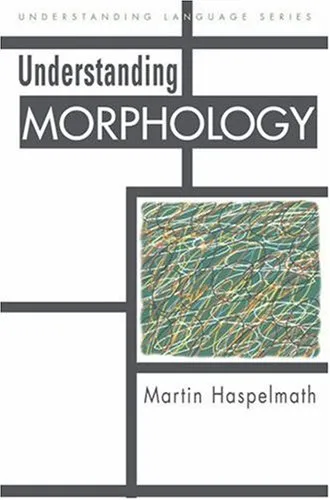

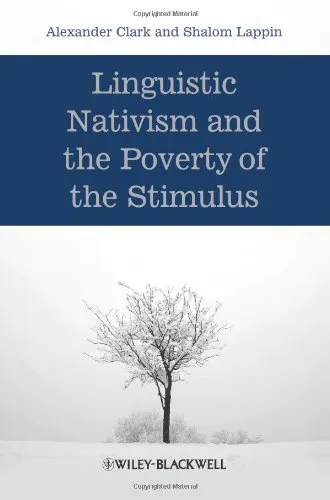

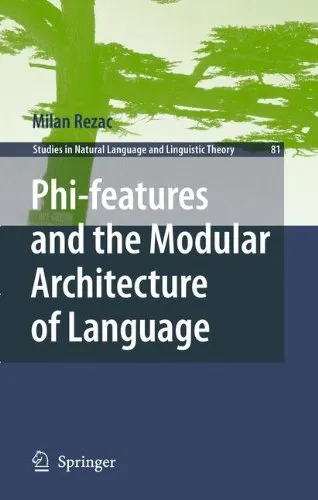

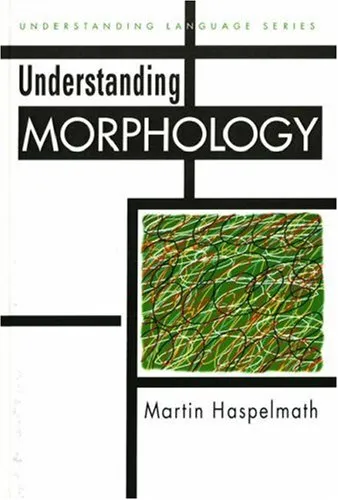





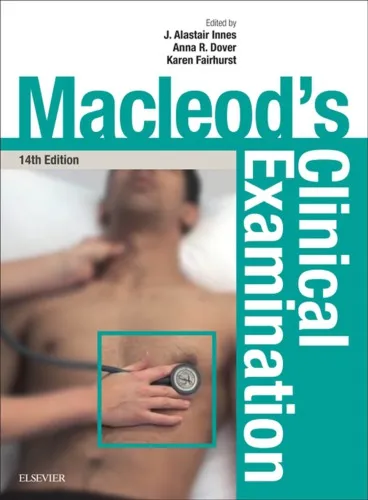

![Studies in Generative Grammar [SGG]; 142](https://s3.refhub.ir/images/thumb/Studies_in_Generative_Grammar__SGG___142_45571.webp)
